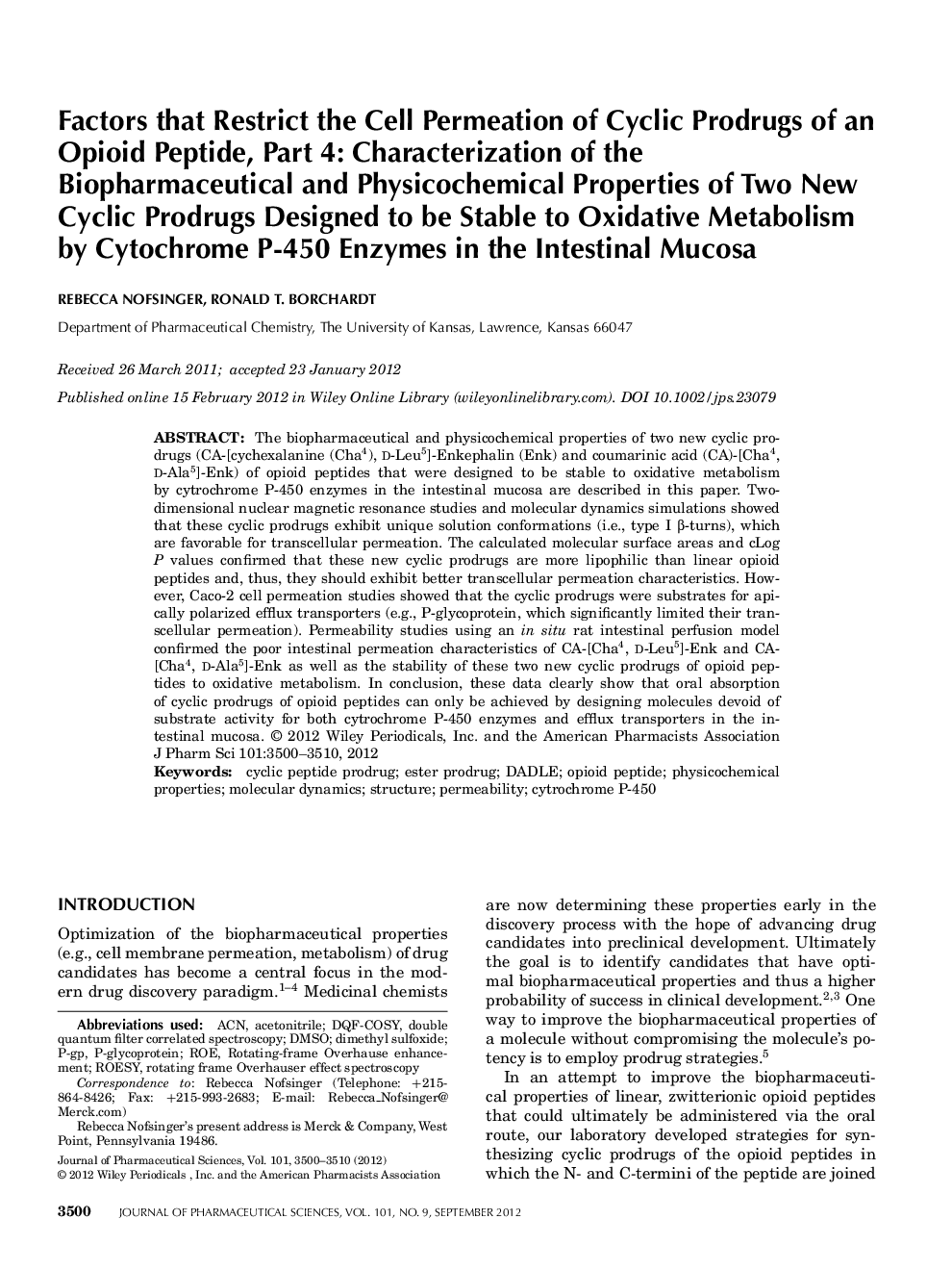| Article ID | Journal | Published Year | Pages | File Type |
|---|---|---|---|---|
| 2485968 | Journal of Pharmaceutical Sciences | 2012 | 11 Pages |
ABSTRACT:The biopharmaceutical and physicochemical properties of two new cyclic prodrugs (CA-[cychexalanine (Cha4), d-Leu5]-Enkephalin (Enk) and coumarinic acid (CA)-[Cha4, d-Ala5]-Enk) of opioid peptides that were designed to be stable to oxidative metabolism by cytrochrome P-450 enzymes in the intestinal mucosa are described in this paper. Two-dimensional nuclear magnetic resonance studies and molecular dynamics simulations showed that these cyclic prodrugs exhibit unique solution conformations (i.e., type I β-turns), which are favorable for transcellular permeation. The calculated molecular surface areas and cLog P values confirmed that these new cyclic prodrugs are more lipophilic than linear opioid peptides and, thus, they should exhibit better transcellular permeation characteristics. However, Caco-2 cell permeation studies showed that the cyclic prodrugs were substrates for apically polarized efflux transporters (e.g., P-glycoprotein, which significantly limited their transcellular permeation). Permeability studies using an in situ rat intestinal perfusion model confirmed the poor intestinal permeation characteristics of CA-[Cha4, d-Leu5]-Enk and CA-[Cha4, d-Ala5]-Enk as well as the stability of these two new cyclic prodrugs of opioid peptides to oxidative metabolism. In conclusion, these data clearly show that oral absorption of cyclic prodrugs of opioid peptides can only be achieved by designing molecules devoid of substrate activity for both cytrochrome P-450 enzymes and efflux transporters in the intestinal mucosa.
